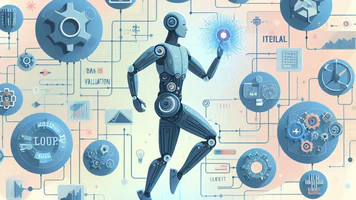
- By Justin Riddiough
- December 7, 2023
Validation Set Performance: Testing the Waters
Think of training your AI model as preparing for a big presentation. You wouldn’t present to your team directly, right? You’d do a practice run first. Similarly, the validation set acts as your practice audience.
- Unseen Data Challenge: The validation set is like a pool of unseen data, untouched during training. Evaluating your model’s performance on this data gives you a true picture of its ability to generalize and handle real-world scenarios.
- Metrics that Matter: Accuracy, loss, and other metrics like precision and recall, act as your scorecard. Analyze these metrics to understand your model’s strengths and weaknesses, identify areas for improvement, and ensure it’s ready for prime time.
Error Analysis & Interpretation: Learning from Mistakes
Even the best runner stumbles sometimes. Analyzing errors your AI model makes is like reviewing your practice run and identifying areas where you can improve.
- Identifying Root Causes: Dive deep into specific errors and understand why they occur. Are there patterns in the data? Is it an issue with the model architecture or hyperparameters? Figuring out the “why” behind the errors equips you with invaluable insights.
- Targeted Improvement Strategies: Don’t just identify issues, fix them! Based on your error analysis, refine your data preparation, adjust your model architecture, or experiment with different hyperparameter settings to address specific weaknesses and improve overall performance.
Model Comparison & Selection: Choosing the Champion
Imagine training several runners for a race. You wouldn’t send them all to the competition, right? You’d pick the best one based on their performance. Similarly, you might have trained several AI models. Comparing their performance on the validation set helps you select the best one for deployment.
- Head-to-Head Comparison: Evaluate each model’s performance on key metrics and consider factors like accuracy,generalizability, and computational efficiency.
- Choosing the Champion: Based on your analysis, select the model that best meets your requirements and is ready to tackle the challenge of real-world application.
Validation & Evaluation is a critical step in the AI development process.** It provides valuable insights into your model’s capabilities, identifies areas for improvement, and ultimately helps you choose the best model for deployment. By applying the techniques discussed in this guide, you can ensure your AI model is well-prepared and ready to make a positive impact in the real world. Remember, the journey to building successful AI models is an iterative process. Evaluate, learn from your results, and constantly strive to improve your models for optimal performance.


